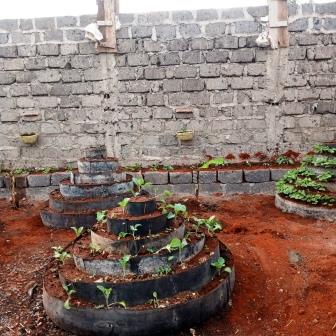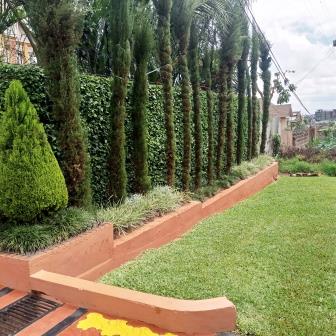Multistory gardens are one way in which you can grow plants and vegetables even in the smallest of spaces. And it is not just for small spaces. If you live in an area where the soil is rocky, sandy or cotton, raising plants can be a challenge. You can side step the trouble of working to improve the soil by using multi-level gardens.


What are multistory gardens?
In a way, multi-story gardens are no different from raised beds. The concept is the same; plant above the existing soil rather than in it. But they go further. Multistory gardens maximize space efficiently as gardening is done going up in layers. The advantage of these gardens is that they can be done both indoors and outdoors, can be decorative (ornamental), functional for food) or both.
What are the main features of multistory gardens?
- Space efficiency
Whereas the amount of lateral space is limited to the area of the ground, in a multistory garden, you raise plants going up-and you can go as up as you wish. I have seen gardens where people even use ladders to tend to plants and vegetables.
- Vertical planting
Imagine all you have is solid ground done with ballast. Such a concreted surface is enough to discourage a would be gardener. However when you go for vertical gardening, this space is perfectly okay for your vegetable or flower needs. You will be gardening in the air and won’t need to break the ground.
- Improvement of aesthetics
Citing the example of a concrete surface or compound which has no space for greenery, a multistory garden makes options to turn concrete jungles into green spaces that flourish with plants and wildlife. Such green spaces will improve the air quality, enhance visual appeal and serve as noise mufflers.
Types of multi story gardens
Multistory or vertical gardens are of two main types; built structures or planting containers.

1. Frames and structures
- Aluminum or steel. These are fabricated structures that are designed to fit specific spaces to
particular measurements.
- Plastic.
This is a favorite of many as they are lightweight and easy to manipulate so that they can fit any space. With plastic, you can literally have any shape you want-which is appropriate for customizing based on one’s space.
- Bamboos- are ecofriendly materials for those who want stylish and cute gardens.
- Wood -it gives a natural look but treatment is needed to guard against vagaries of weather
2. Planting containers
These include
Plastic pots- The simplest of which is a single pole runs through several pots.
Hydroponic – Plastic trays and tubes with soilless mixtures for growing plants
Clay pots – Handmade or industrial pots that are renown for good aeration and heat transfer.
Setting up a Multi-Story Garden; An illustrated example using plastic
The process



- First assemble the desired materials. Here are the materials you need.
- Soil
- Compost
- Plastic sheeting
- Seeds/seedling
- Mark out the areas in which you want to lay the multi-story gardens
- Lay the first plastic sheeting on the ground. The plastic sheeting comes with nuts and pre-perforated spaces which you only join. Joining these gives you circles
- Mix the compost with soil in equal measure of 1:1. This ensures your garden is rich in plant food besides being able to retain a lot of moisture.
- Back fill the first plastic sheeting up to the brim.
- Gently press the soil. You have created your first layer/story
- On top of the first layer, add the second plastic sheeting. Backfill with soil until full.
- Repeat this process until gradually you several stories or layers of circular rings
- Then water thoroughly. Plant your seeds/seedlings starting at the base as you go up.
- Bigger plants are grown at the lower levels while small plants are put ay the top
- Water again after planting. Your garden is all set
- Keep observing the plants or seedling to determine which need watering as not all may have the same water requirements.
.


Leave a Reply